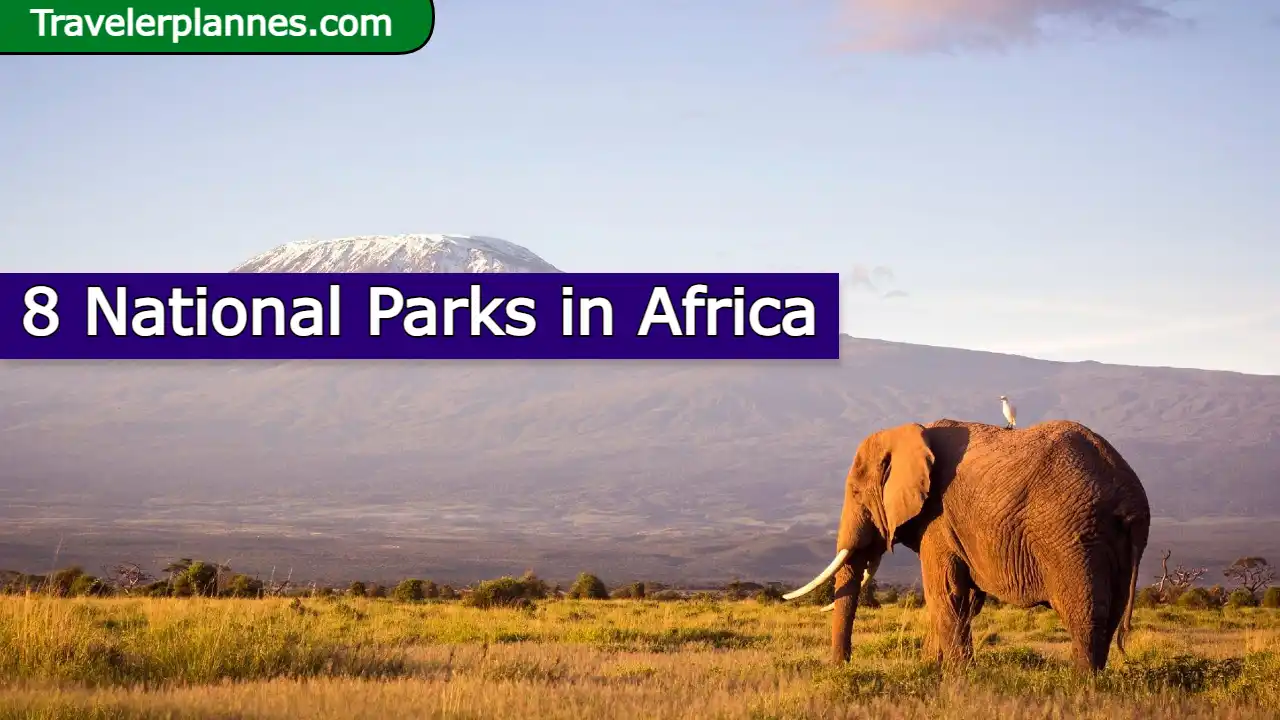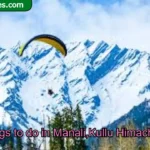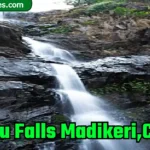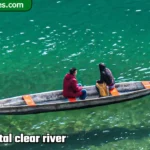National Parks in Africa: Africa’s wildness has some of the world’s most beautiful national parks. These protected areas showcase the continent’s incredible biodiversity, from vast savannas to deep rainforests filled with rare animals. This thorough book takes us through 8 great African national parks, each with its own distinctive characteristics, ecological significance, and intriguing experiences.
Contents
- 1 1. Serengeti National Park, Tanzania
- 2 2. Kruger National Park, South Africa
- 3 3. Maasai Mara National Reserve, Kenya
- 4 4. Bwindi Impenetrable National Park, Uganda
- 5 5. Chobe National Park, Botswana
- 6 6. Virunga National Park, Democratic Republic of Congo
- 7 7. Etosha National Park, Namibia
- 8 8. Rwenzori Mountains National Park, Uganda
- 9 Conclusion
1. Serengeti National Park, Tanzania
Location: Northern Tanzania
Size: 14,763 square kilometers
Key Features: The Great Migration, Big Five, Serengeti Plains
Tanzania’s main treasure, Serengeti National Park. This UNESCO World Heritage site is famous for its immensity and animal movements. The Serengeti Plains’ Great Migration, when millions of wildebeest, zebras, and other herbivores seek for new pastures, is the park’s most famous occurrence. Every animal enthusiast must experience this amazing natural phenomenon.
Beyond the migration, the Serengeti is home to Africa’s Big Five: lions, elephants, buffalos, leopards, and rhinoceros. The vast meadows are excellent for viewing these gorgeous creatures in their native habitat. Riverine woodlands and kopjes (rocky outcroppings) in the park provide animal observations and picture possibilities.
2. Kruger National Park, South Africa
Location: Northeastern South Africa
Size: 19,485 square kilometers
Key Features: Diverse Wildlife, Birdwatching, Archaeological Sites
Venture into the heart of South Africa’s wildlife haven, Kruger National Park. Established in 1898, this iconic park boasts an impressive array of flora and fauna that captivates visitors with its beauty and diversity. Spanning nearly 20,000 square kilometers, Kruger is home to a staggering variety of species, making it a paradise for wildlife enthusiasts and photographers.
Kruger’s immense landscapes provide a canvas for observing the Big Five, as well as cheetahs, hippos, crocodiles, and over 500 bird species. The park’s diverse ecosystems, ranging from savannas to woodlands, contribute to its rich biodiversity. For a deeper connection to the land, visitors can explore archaeological sites, uncovering evidence of early human habitation and historical significance.
3. Maasai Mara National Reserve, Kenya
Location: Southwest Kenya
Size: 1,510 square kilometers
Key Features: Great Migration, Big Cats, Maasai Culture
Crossing into Kenya, we arrive at the renowned Maasai Mara National Reserve. Situated adjacent to Tanzania’s Serengeti, this reserve is integral to the Great Migration phenomenon. Witness the thundering hooves of wildebeest and zebras as they journey across the Mara River in search of nourishing grasses – a spectacle that exemplifies the circle of life in the African savanna.
While the Great Migration is the highlight, the Maasai Mara offers year-round wildlife viewing. The reserve’s open grasslands are a haven for predators, particularly big cats such as lions, leopards, and cheetahs. Immerse yourself in the vibrant Maasai culture by interacting with the local Maasai people, known for their pastoral lifestyle and unique customs.
4. Bwindi Impenetrable National Park, Uganda
Location: Southwest Uganda
Size: 321 square kilometers
Key Features: Mountain Gorillas, Rich Biodiversity
In the lush hills of southwestern Uganda lies Bwindi Impenetrable National Park, a sanctuary for one of the world’s most endangered species – the mountain gorilla. Embark on an unforgettable trek through dense forests to witness these gentle giants in their natural habitat. The encounter is both humbling and mesmerizing, leaving visitors with a profound appreciation for conservation efforts.
Beyond gorillas, Bwindi’s rich biodiversity includes various primate species, such as chimpanzees and colobus monkeys. The park’s unique montane forest ecosystem harbors rare bird species and a myriad of flora. Your journey through Bwindi is not only a wildlife adventure but also a testament to the importance of preserving fragile ecosystems.
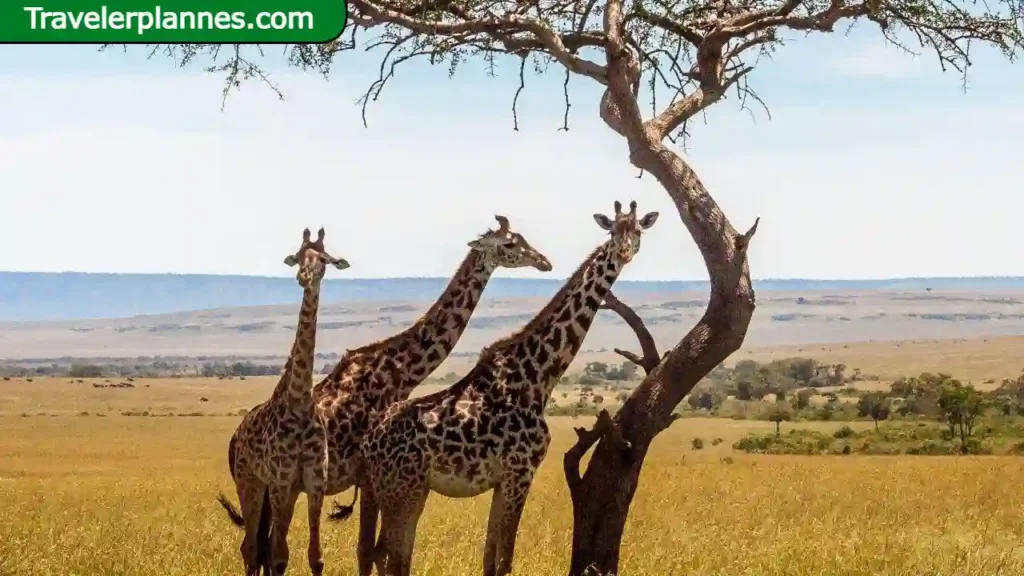
5. Chobe National Park, Botswana
Location: Northern Botswana
Size: 10,566 square kilometers
Key Features: Chobe River, Elephants, Water-based Safaris
Welcome to Chobe National Park, where the rhythms of the wild are choreographed by the Chobe River. This park’s allure lies in its diverse landscapes and abundance of wildlife that congregates around the river’s life-giving waters. Chobe boasts the largest elephant population in Africa, and the sight of these magnificent creatures bathing and drinking by the riverbanks is both captivating and humbling.
One of Chobe’s unique features is the opportunity for water-based safaris, allowing you to view wildlife from a different perspective. Glide along the river’s surface and witness crocodiles sunning themselves on sandbanks, hippos wallowing in the shallows, and a vibrant array of birdlife.
Also Check: 10 Exciting Wildlife Safaris in Dubai: An Unforgettable Journey!
6. Virunga National Park, Democratic Republic of Congo
Location: Eastern DRC
Size: 7,800 square kilometers
Key Features: Mountain Gorillas, Active Volcanoes, Rich Diversity
Journey to the enigmatic Virunga National Park in the Democratic Republic of Congo. This UNESCO World Heritage site is a treasure trove of natural wonders. The park is renowned for its population of mountain gorillas, offering a rare opportunity to connect with these gentle giants. The experience of meeting gorillas face-to-face is a poignant reminder of the need for conservation.
Virunga’s diversity extends beyond gorillas. The park is home to active volcanoes, including the towering Nyiragongo, whose fiery heart contains the world’s largest lava lake. The varied landscapes, from lush forests to expansive savannas, harbor an impressive array of species, making Virunga a true haven of biodiversity.
Also Check: Best Manali Tour Guide 2023; 5 Things you Should Do Before Your Tour
7. Etosha National Park, Namibia
Location: Northern Namibia
Size: 22,270 square kilometers
Key Features: Etosha Pan, Salt Pans, Abundant Wildlife
Welcome to Namibia’s prized gem, Etosha National Park. Central to this park’s allure is the immense Etosha Pan, a salt flat that shimmers under the African sun. This unique feature not only lends its name to the park but also serves as a magnet for wildlife during the dry season. Waterholes along the pan’s edge become prime spots for game viewing, offering visitors a front-row seat to the spectacle of life and survival.
Etosha’s abundant wildlife includes the iconic Big Five, along with rare and endangered species such as the black rhinoceros. Exploring the park’s diverse habitats, which range from grassy plains to mopane woodlands, rewards adventurers with an intimate glimpse into the intricate web of life that thrives in this arid landscape.
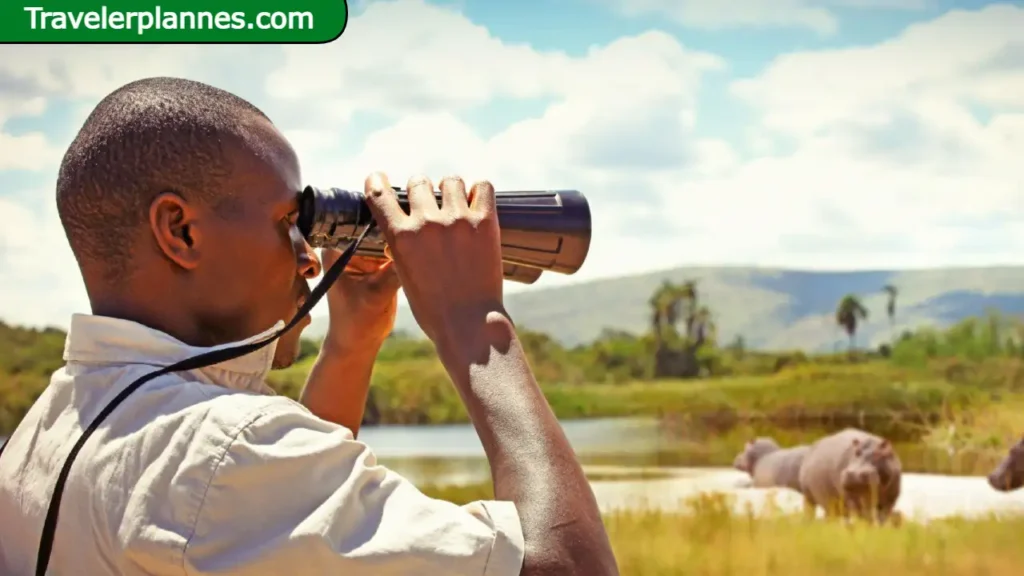
8. Rwenzori Mountains National Park, Uganda
Location: Western Uganda
Size: 996 square kilometers
Key Features: Rwenzori Mountains, Alpine Vegetation, Glacial Lakes
Our final destination takes us to the “Mountains of the Moon” – Rwenzori Mountains National Park in Uganda. This park is a paradise for mountaineers and adventurers seeking a unique alpine experience in Africa. The Rwenzori range is characterized by its snow-capped peaks, glaciers, and vibrant alpine vegetation.
Trekking through the misty forests and ascending the rocky terrains of the Rwenzori Mountains is a challenge that rewards with panoramic vistas and encounters with unique flora and fauna. The park’s glacial lakes, nestled between towering peaks, add to the enchanting beauty of this otherworldly landscape.
Conclusion
In conclusion, Africa’s national parks are windows into the continent’s soul – revealing its captivating landscapes, awe-inspiring wildlife, and the delicate balance of ecosystems. From the Serengeti’s sweeping savannas to Bwindi’s dense forests, each park offers a distinctive narrative of nature’s grandeur. By exploring these parks and supporting their conservation, we not only satisfy our wanderlust but also contribute to the preservation of Africa’s natural heritage for generations to come.
